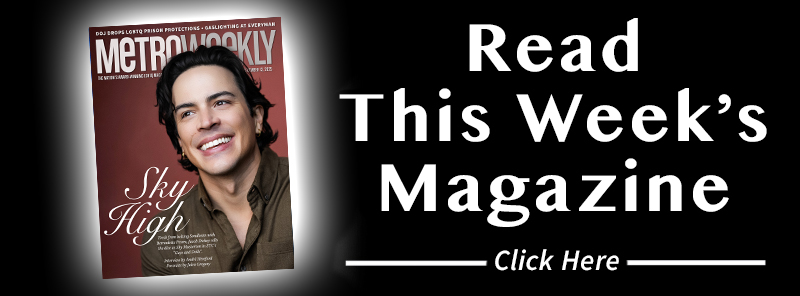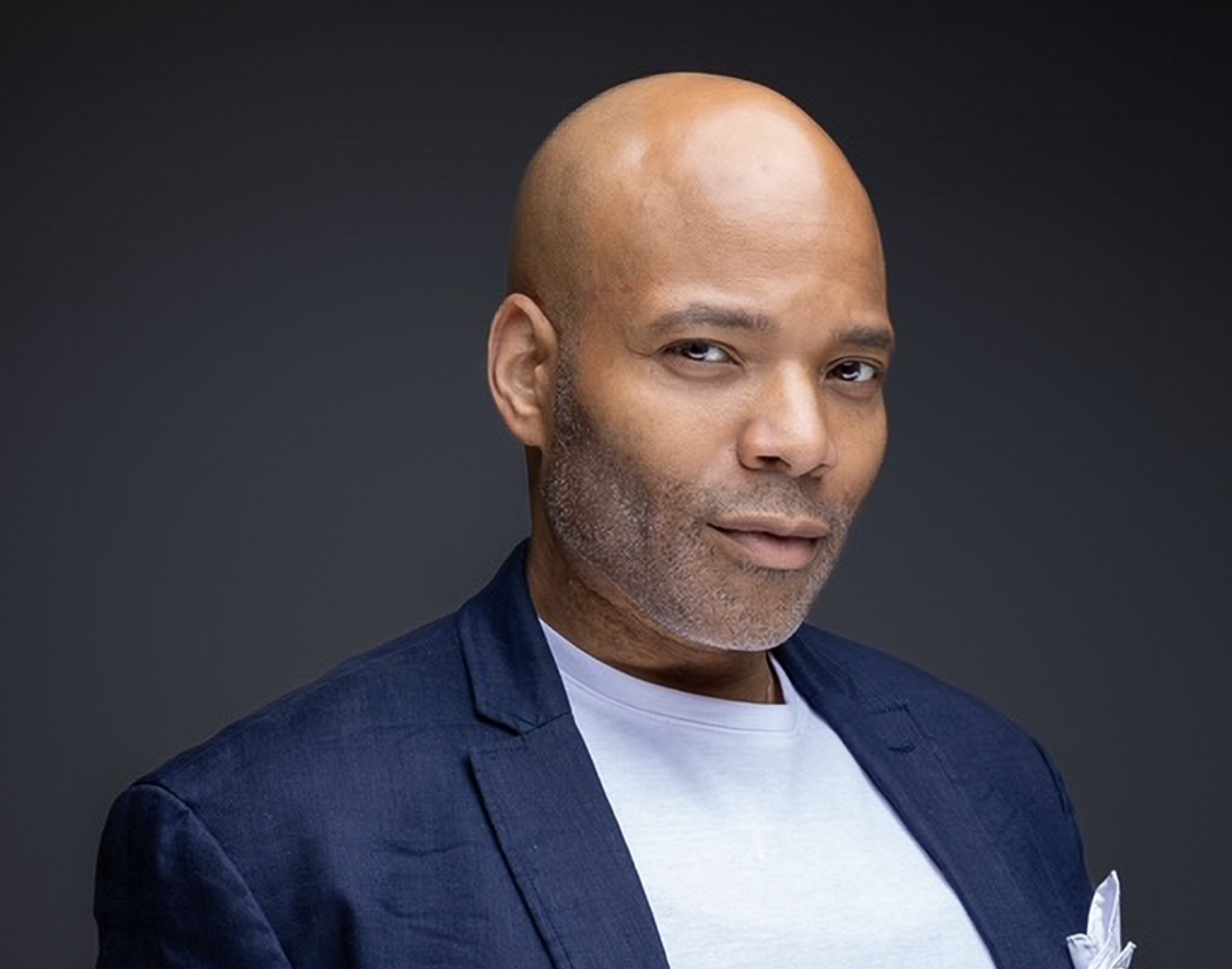Review: Washington National Opera’s “Madame Butterfly”
WNO's "Madame Butterfly" blends beautiful opera with an overwhelming art concept

As we all know, one man’s contemplation of nature’s shapes and synergies is another man’s pile of rocks in the middle of a gallery floor. Art, especially the modern conceptual kind, is subjective. And, like jazz, it often benefits from repeated viewing, time to reflect, even some knowledge of the artist’s intent. Context is always vital.
Put it all together and set design is an ideal place for modern art — there is tremendous scope for experimentation, because the stage, by its nature, invites an open mind and creates context. Thus, the mere fact that the WNO’s season-closer of Madame Butterfly (★★★★) was designed by the modern artist Jun Kaneko is not the issue. Though some may resist on principle — they just don’t like their Puccini messed with — the modernity itself is not the problem. It’s the concept.
As noble and interesting the intent, the art here just doesn’t quite work. Would this change with repeated viewings? Time to reflect? Knowledge of the artist’s intellectual process? Maybe. But it is a reality that when it comes to the stage — especially the opera stage — the set designer gets just one bite of the apple. An audience will respond instantly in the space of an evening and within the perimeters of story and music.
Here, Kaneko’s immense projections in striations of primary colors, his snaking lines and computerized colorings-in and childish silhouettes of Pinkerton’s warship may be fascinating, but somehow none of it quite gels with the music or the mood of Butterfly. In fact, in some ways it even draws from the opera’s potential for immense emotional energy.
Take, for example, the screen juxtaposed to Butterfly and Pinkerton during their great (and prolonged) love duet. At first, the many wavering lines of color suggest a sunset and then a giant yellow moon begins to appear and rise up the screen. But its flatness is distracting. It feels like a symbol from a strange language we don’t yet know. And yet at the same time the lovers’ song is soaring in one of the most starry, magical duets in all of opera. It’s a conceptual tension that just doesn’t feel right. Later, in the finale, as Butterfly initiates her terrifying act of hari-kari, another circle, this one red, grows behind her on a pure white screen. At first the image is deeply poignant in its simplicity and its relentless dilation. But then, alas, it begins to drip like blood and all subtlety is lost. And the less said about the giant butterfly puppet that arrives with Cio-Cio-San as she delivers her “One Fine Day” aria, the better. Butterfly captures the mystery and darkness of love and betrayal, but so much of this art does not.
Yet, such concept-art can work. Case in point was Mariusz Trelinski’s stunning 2006 Butterfly, a highly-stylized interpretation that also embraced color. Take Cio-Cio-San’s entrance: She arrived, singing her desperately wistful aria in a blood-red boat, on a blood-red sea in a blood-red light. It was simple but astounding, because the foreshadowing inherent in its concept touched so perfectly on the dark core of this young woman’s destiny. We all know she will be travelling to the deepest, darkest places in her heart’s despair, and seeing it expressed at the outset was nothing short of electric.
Still, if the projections are a challenge here, there are some beautifully conceived color contrasts between the stage and the backdrop, which create gorgeous swaths of vibrancy. The characters (and especially the four mysterious black-clad prop servants) are, at times, cleverly choreographed to create some gratifying tableaux. The brightly colored parasols of the chorus are also attractive, if, again, somewhat out of step with the themes.
But all this said, if purely for the chance to hear this eternal favorite, at least musically you can’t go wrong. Although her Cio-Cio-San is rather full of herself (if all too true for the average fifteen-year-old), Ermonela Jaho certainly gives her young woman personality. She sings with expression and beauty, even if she doesn’t bring quite enough power to the highest, most poignant, notes. As Pinkerton, Brian Jagde does an excellent job delivering the early 20th century version of a Bro with a heart, and brings pleasing power to those glorious notes that so splendidly surf an orchestra in full Puccini swell. Drawing a very subtle and credible Sharpless, Troy Cook sings with expression, if not always volume. Another standout is Ian McEuen as the marriage broker Goro. His tenor is attractively piquant and he blends the right mix of self-interest and veiled sympathy. Kudos to Domingo-Cafritz young artists Timothy J. Bruno and Michael Adams. Bruno, singing with clarity and power, is an exciting Bonze, arriving as if flying down out of the clouds to condemn Butterfly for abandoning her religion. As spurned suitor Prince Yamadori, Adams cuts a dashing and thoroughly convincing figure and sings with a very attractive baritone.
Last but not least, one of the most affecting performances comes from Kristen Choi in the role of Suzuki, Butterfly’s loving and long-suffering servant. Very much in tune with Cook’s understated Sharpless, this is where the poignancy of this production truly lies. It is Suzuki’s growing sadness, despair and resignation as she watches Butterfly’s denial entrench that delivers the pathos. She truly loves this rather immature and self-absorbed girl, and her heartbreak is beautifully portrayed. Choi’s velvety-rich mezzo-soprano is full of the gravitas of the coming tragedy and her duet with Cio-Cio-San was — despite an absurdly overdone orgy of cherry blossoms — magnificent.
Thus, if the sets may give pause, the rest does not. Catch this Butterfly if you can.
Madame Butterfly runs to May 21 at the Kennedy Center Opera House. Tickets are $25 to $300. Call 202-467-4600 or visit kennedy-center.org.
Support Metro Weekly’s Journalism
These are challenging times for news organizations. And yet it’s crucial we stay active and provide vital resources and information to both our local readers and the world. So won’t you please take a moment and consider supporting Metro Weekly with a membership? For as little as $5 a month, you can help ensure Metro Weekly magazine and MetroWeekly.com remain free, viable resources as we provide the best, most diverse, culturally-resonant LGBTQ coverage in both the D.C. region and around the world. Memberships come with exclusive perks and discounts, your own personal digital delivery of each week’s magazine (and an archive), access to our Member's Lounge when it launches this fall, and exclusive members-only items like Metro Weekly Membership Mugs and Tote Bags! Check out all our membership levels here and please join us today!



























You must be logged in to post a comment.